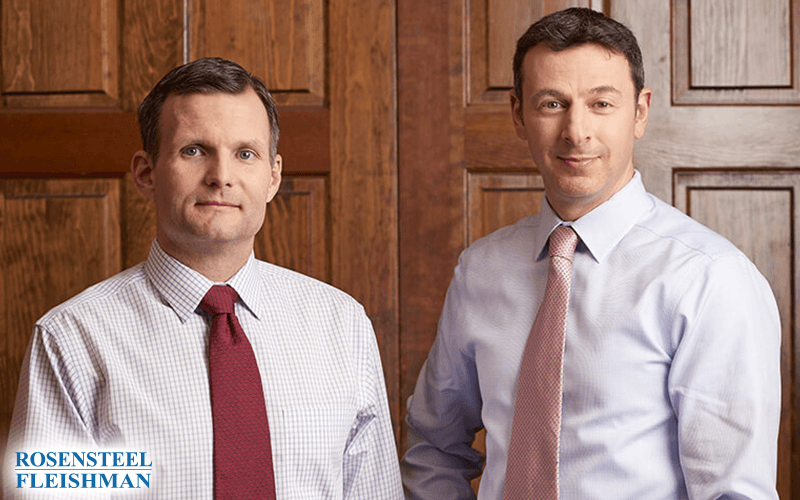According to local news outlets, traffic fatalities in the United States have decreased for the second consecutive year in 2023, even as Americans drove more miles. The National Highway Traffic Safety Administration (NHTSA) revealed that there were 40,990 deaths in motor vehicle crashes last year, marking a 3.6% decline from the 42,514 fatalities in 2022. […]

Van Driver Crashes Into Restaurant and Arrested for DWI
The Thanksgiving holiday weekend is over. For some people, holidays can be a stressful time due to family pressures and overindulging. One man’s overindulgence led to a whole other level of stress. WSOC-TV reports that, last night, a man who was driving a white van while drunk unsuccessfully turned left at an intersection and ran his van right into a sushi restaurant. The driver was attempting to make a left turn from Rea Road onto Ardrey Kell, but was driving so erratically that he hit another car and then ended up running into the restaurant. The sushi restaurant was forced to close because of the damage to the building but is back open today. The driver of the van was taken to the hospital to treat injuries sustained during the accident and was arrested for dwi upon release. Fortunately, no one else was injured in the accident.
Now, let’s look at the negligence analysis of the van driver. Usually, to prove a defendant’s negligence, the plaintiff must show that the defendant breached a duty owed to the plaintiff to exercise reasonable care and that the breach both actually and proximately caused injury to the plaintiff. However, a defendant is considered negligent per se if he violates a statute enacted to protect the public. If a defendant is negligent per se, all that must be proven is proximate cause.
The news report states that the van driver was drunk and arrested for DWI upon his release from the hospital. Therefore, he violated G.S. 20-138.1 which states that
A person commits the offense of impaired driving if he drives any vehicle upon any highway, any street, or any public vehicular area within this State:
(1) While under the influence of an impairing substance; or
(2) After having consumed sufficient alcohol that he has, at any relevant time after the driving, an alcohol concentration of 0.08 or more. The results of a chemical analysis shall be deemed sufficient evidence to prove a person's alcohol concentration; or
(3) With any amount of a Schedule I controlled substance, as listed in G.S. 90-89, or its metabolites in his blood or urine.
Some traffic statutes specifically exempt a violation thereof from constituting negligence per se. However, the impaired driving statute contains no such exemption, and the van driver was therefore negligent per se.
We next turn to the issue of proximate cause, or whether the injuries were a direct and natural consequence of the driver’s negligence. Causing damage to a building by running into it with your motor vehicle is a direct and natural consequence of the negligent act of impaired driving.
Let’s now change up the facts a little bit and consider what would happen if there was a pedestrian who was crossing the street against the light and was struck by the van driver when he attempted to make his left turn at the intersection. Pedestrians have duties when they are crossing the street. If there are pedestrian Walk/Don’t Walk signals, they must follow these signals, under G.S. 20-172. If there are not specific pedestrians signals, pedestrians are to follow the vehicle signals. If there are no traffic signals, pedestrians have the right-of-way when crossing in crosswalks, under G.S. 20-173. And if pedestrians are crossing the street where there are no crosswalks, they are to yield the right-of-way to vehicles on the street, under G.S. 20-174.
Let’s assume that there were pedestrian signals and the signal said Don’t Walk because vehicle traffic had a green left-turn arrow. However, the pedestrian crossed the street anyway. The impaired van driver turning left then struck the pedestrian crossing against the signal. How does this change our negligence analysis?
The van driver is still negligent under our above negligence per se analysis. But now he may raise the defense of the plaintiff’s contributory negligence. In most states, a plaintiff’s negligence will not keep him from recovering, but it might lessen the damages he can receive. However, North Carolina is one of a handful of states that follows the stricter doctrine of contributory negligence in which a plaintiff’s negligence can completely bar his recovery.
Our hypothetical pedestrian has violated another traffic statute which was enacted to protect the public. Specifically, G.S. 20-172(b)(2) states that “DON'T WALK. - No pedestrian shall start to cross the highway in the direction of such signal, but any pedestrian who has partially completed his crossing on the "WALK" signal shall proceed to a sidewalk or safety island while the "DON'T WALK" signal is showing.” The statute does not exempt a violation thereof from being considered negligence per se. Turning to proximate cause, being hit by a vehicle is a natural and direct consequence of crossing the street in the face of a Don’t Walk signal. Therefore, our pedestrian is contributorily negligent. Does this mean that our pedestrian is out of luck?
No, because our analysis does not end here. A defendant’s gross negligence is a defense to a plaintiff’s contributory negligence. In motor vehicle cases, North Carolina court have determined that
Our case law as developed to this point reflects that the gross negligence issue has been confined to circumstances where at least one of three rather dynamic factors is present: (1) defendant is intoxicated, (2) defendant is driving at excessive speeds, or (3) defendant is engaged in a racing.
The impaired van driver’s behavior clearly falls into the first category of this list, so the driver is grossly negligent. The driver’s gross negligence is a defense to the pedestrian’s contributory negligence, and the pedestrian is not barred from recovery.
If you have been injured in a car accident, contact an attorney at Rosensteel Fleishman Car Accident & Injury Lawyers (704) 714-1450, to discuss your options.
Additional Car Accident Articles
Dealing with the aftermath of a car accident can be overwhelming. It's not just the physical recovery; the legal side of things can feel like a maze. That's where a car accident lawyer in Charlotte, NC, can step in to simplify the process for you. If you're feeling stuck and unsure about what to do […]
Getting into a car accident is one of those things you never really see coming, and it can leave you feeling pretty shaken up, not just physically but also with the maze of legalities to deal with afterward. That's where the importance of finding a reliable car accident lawyer comes into play. Imagine having someone […]
Dealing with the aftermath of a car accident can be overwhelming, to say the least. Suddenly, you're thrust into a world of insurance claims, medical appointments, and potential legal battles, all while trying to recover from your injuries. It's a lot to handle on your own. That's where finding a top-rated personal injury lawyer in […]
